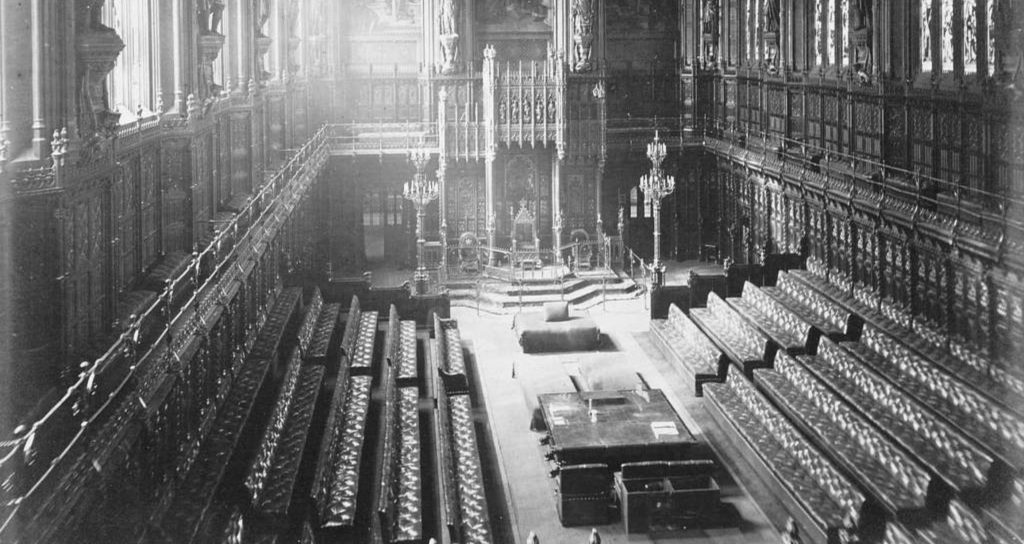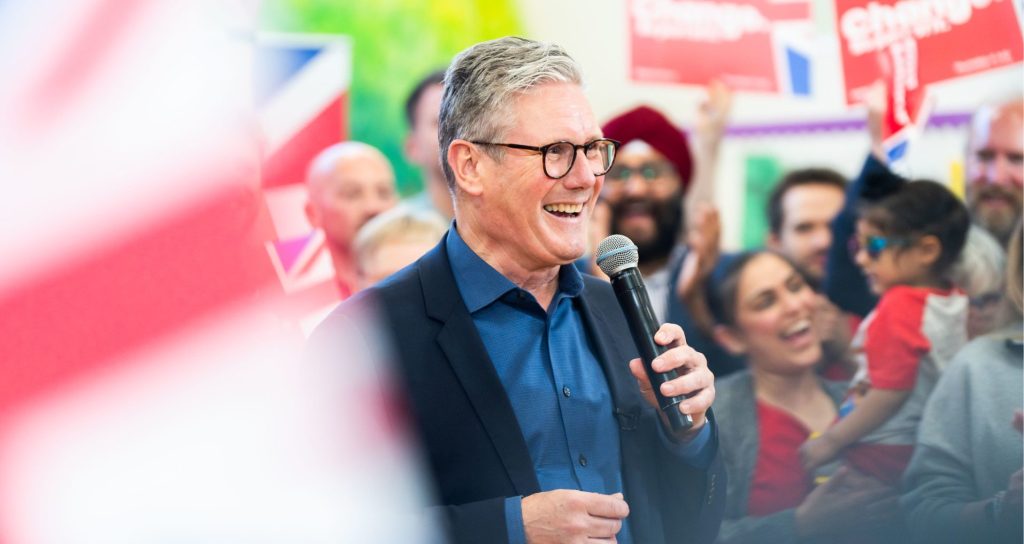The location for Keir Starmer and Rishi Sunak’s New Year speeches may have been the same East London University site, but much of the target audience live significantly further north. Ignoring the ins and outs of who booked the venue first (my money’s on Labour), both speeches signalled a clear starting gun on the very long run up to the next General Election.
Just a week before, a new £4.2bn devolution deal for the North East of England – covering seven Local Authorities (the LA7 as devo aficionados say) in Northumberland, Tyne & Wear and Durham – was finally announced just after everyone’s Boxing Day leftovers were past their best.
If the Councils approve the plans by the end of March this year, legislation will follow and an election for a new Mayor will take place in May 2024 – very possibly before the next General Election which has to be by January 2025 at the latest. The North East nearly had a big devo deal before, but it fell apart in 2016 leading to a much smaller mayoralty for the North of Tyne which will now be scrapped.
The Tories openly acknowledge that current polling would see Labour winning the new North East Mayoral election in 2024, and it includes some seats that are real corkers in the battleground for the next General Election. There are 22 current Parliamentary seats in the new Mayoral Authority, including Conservative 2019 Red Wall gains in Blyth Valley, North West Durham, Sedgefield and Bishop Auckland. Under the new Parliamentary boundaries – which kick in if the General Election takes place after the legislation goes through Parliament – that goes down to 20, but notional majorities in the new constituencies means that at least a quarter of these new seats are genuinely competitive. Politically, the new Mayoralty will be the second biggest in the North of England behind Greater Manchester – the same number of seats as West Yorkshire but with more Local Authorities, and bigger than Liverpool City Region, South Yorkshire and the Tees Valley.
The deal includes full powers over adult education and skills, over £500m for rail improvements and the power to bring buses back into public hands, a green ‘superport’, £20m for regeneration projects, over £17m for accelerating development on brownfield sites and potential trailblazer status alongside Greater Manchester and the West Midlands. It’s being trailed as creating up to 24,000 jobs, 70,000 courses per year and leveraging £5bn of private sector investment.
The big contest is who the Labour candidate will end up being. There is no direct incumbent and there won’t be an interim Mayor. Unsurprisingly, the sitting North of Tyne Mayor, Jamie Driscoll, whose post will be scrapped, has openly signalled his intention to stand. He is attempting to rebrand himself from being Corbyn’s heir apparent in the North to someone on the moderate wing but is not succeeding given his longstanding Momentum membership and leadership of the Northern England Labour Left. He has also claimed credit for the deal, a risky move given the role the council leaders have played in maximising the benefits for the region and the Labour frontbench view that much more ambition is needed. Kim McGuinness, who featured heavily in the video that introduced Starmer’s speech at Labour’s Annual Conference in September and who represents the bulk of the new Mayoralty already as Police and Crime Commissioner, is being encouraged to stand by activists, MPs and Trade Unions across the region.
So, the stakes for Labour in this election and in the run up are big. Politically, it’s a huge opportunity for its core messages and offers to voters to be a springboard in the heart of the Red Wall in the North of England before the next General Election; but organisationally, the selection contest is a microcosm of where the party membership is post Corbyn, and the campaign a real opportunity to add resources into key battleground seats before the General election.
Back to the Brown Commission
Starmer first announced the Commission at the annual JP Mackintosh lecture two years ago. And it is not by accident that the location for its launch in December was in Leeds, in the heart of the seats Labour needs to win back, with West Yorkshire’s Mayor and former Labour MP, Tracy Brabin in attendance.
Originally seen by some as how Labour would position itself on the constitution in Scotland during the next General Election, the Commission’s work also includes a new blueprint of self and shared government, designed to achieve faster change within a reformed UK.
The report grabbed headlines with its recommendation to reform the House of Lords, proposing to replace it with a slimmer second chamber – an Assembly of the Nations and Regions who are ‘guardians of change.’ But don’t let that distract your attention from the big focus on economic devolution and the insight into Labour’s messages to voters in key constituencies. Starmer has been deliberately fronting up how he plans to take Brown’s work forward and we can expect much of the fundamental analysis and the policy recommendations for a ‘new Britain’ to be core to his vision and Labour’s offer at the next General Election.
Labour taking back control
Labour is gearing up for devolution to be a major part of its manifesto at the next General Election, with the delivery of economic devolution alongside democratic renewal at its heart. Maybe it won’t be on the pledge card, but it will permeate its manifesto. In his speech in December, Starmer talked of ‘the biggest ever transfer of power from Westminster to the British people’ and the core of Brown’s analysis is the belief that the UK’s uniquely unequal economy is holding back the entire country.
That is underpinned by Brown’s analysis that Britain is not delivering enough for its people – economically, socially or democratically – and the more areas that are left behind economically, the worse the social outcomes and the more people feel abandoned by a political system. The theory is that the centralised power structure keeps the UK’s unequal economy in place, with too few people making decisions on behalf of too many places, leading to a loss of trust in politicians. Economic devolution is a big part of Brown’s proposed solution; ‘rewiring’ Britain, giving communities power over the ingredients of growth with new regional clusters of connected industries and growth plans for every part of the UK – owned locally and fairly resourced.
Labour will need to map out how this transfer of power, for the ‘right powers in the right places’, will look like in practice. The structures and options will follow, but the ambition is for every town and city in England to ‘take back control’ of its economic future and have its fair share of resources. That phrase, ‘take back control’ did feature in the Brown Commission report and Starmer’s grasp of it in his New Year speech and the proposed ‘taking back control’ bill shows how the Brown Commission work is already being taken forward. The North East is an ideal place to get a head start for Labour.
Key voters in Scotland and England
‘Middle Scotland’ is beginning to become part of the political lexicon and it is a big part of Brown’s analysis. Breaking down Scottish voters into how they voted in the 2014 Referendum is too simplistic for future elections and misses the subtleties of political sentiment in post-2014 and 2016 Scotland. Like Remainers and Leavers, it is a very useful way to segment and analyse how party voting intention breaks down but all voters in Scotland do not conform to a binary pro-Independence or pro Union world view. Those in the middle are primarily Scottish but also meaningfully British: younger, more female and more Remain-leaning. They want change but are not committed to Independence as the only form of change; a serious plan to change Britain may be more attractive than Independence and could prove core to Labour winning in Middle Scotland.
When you translate that to seat numbers at the next General Election, squeezing the Unionist vote will only bring Labour six to eight more seats. To get anywhere above 10, Labour needs these Middle Scotland voters to switch from the SNP to make any significant seat gains in Scotland.
It’s easy to come to the conclusion that politics operates very differently in Scotland and England. But the interplay and commonalities between the two will impact greatly on the strategies for the next General Election and how it works on the ground.
If Labour is consistently ahead or riding high in the polls, it’s much harder for the SNP to land their de facto referendum message by equating every SNP vote as a vote both for a Referendum and for maximising the number of SNP MPs to ‘stand up for Scotland’ and be power brokers. The Chester by-election victory for Labour, despite the circumstances that brought it about, saw a fall in the Conservative vote share of 16% with the vast bulk heading straight to Labour. A swing to Labour of that size from the Conservatives is Government-forming territory for sure, despite its location in the North West which has consistently proved more resilient for Labour to Red Wall losses.
The issues that Labour needs to address with those vital Middle Scotland voters and Leave voters in England share many similarities, particularly to win Red Wall seats back from the Conservatives. Tackling distrust in politics and Westminster, disillusionment and feeling left behind are core challenges across the board. The Commission’s polling shows that 57% of Middle Scotland, 53% of England Leave voters and 58% of Remain voters are in favour of radical change in how power works in the UK and have common agreement on what that radical change should look like: locally sensitive decisions made by more local and devolved politicians with a fully reformed centre.
Outside the bubble – the nations and regions are key
The distinction between the ‘ground’ and ‘air’ war at elections was the big thing in the 90s and 2000s. It’s still there, but former colleagues of mine will not be shocked to hear me trumpeting the importance of the Nations and Regions in elections, and it holds true for UK politics.
Nations and Regions of the UK have never been more important in UK politics, and Labour could be about to pay proper attention to their potential. In the context of a future manifesto potentially pledging mass decentralisation of power and a proposed new and powerful Council of Nations and Regions, its potential is much more significant.
Given how far the Tories trail and the difficulties that lie ahead, a Labour government in some form seems to the most likely outcome of the next General Election. The dilemma for businesses and business organisations is whether they should grasp the opportunities nationally and regionally to engage with Labour now to help shape its election offering or hold back for more certainty. Engaging and looking to build relationships with politicians in Westminster is important, but it’s amplified so much more if you engage where the key voters and the key contests are and do so at the right time.



